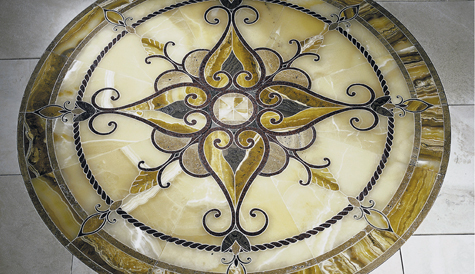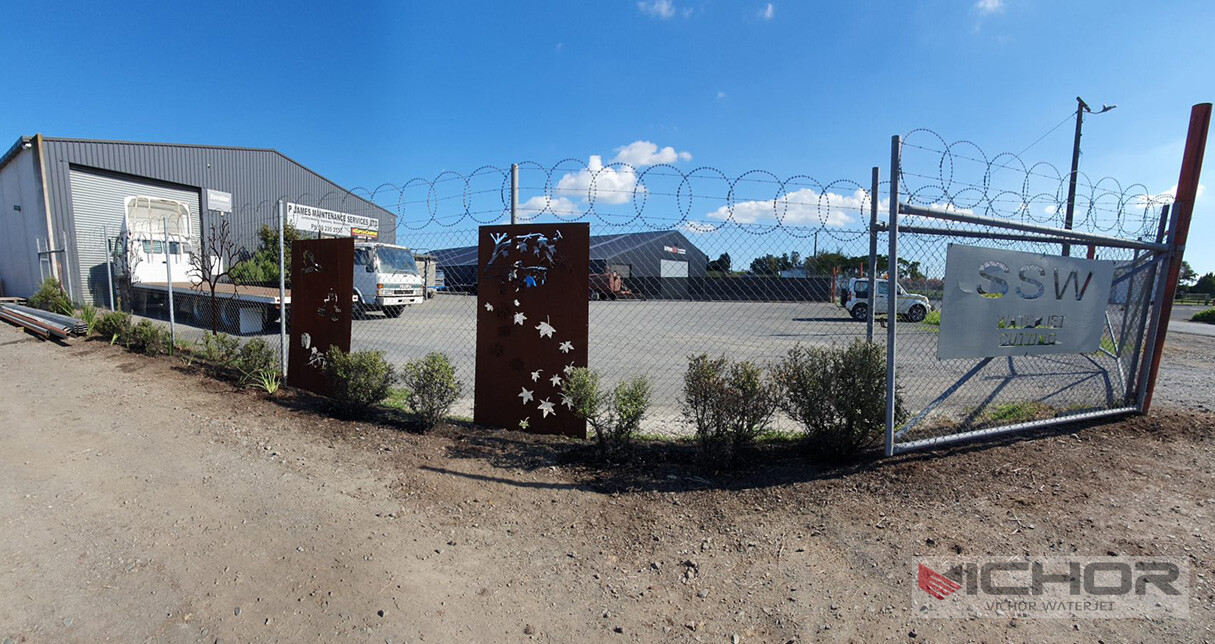
How Water Jet Rock Cutters Work: Precision, Power, and Applications
In the realms of stone fabrication, mining, and construction, cutting through incredibly hard materials like granite, marble, and sandstone requires tools of immense power and precision. Among the various technologies available, one stands out for its versatility, cool-cutting capability, and sheer force: the water jet rock cutter. This technology harnesses the power of water, and often abrasive materials, to slice through stone with an accuracy that traditional methods struggle to match. But what exactly is a water jet rock cutter, how does it function, and what makes it the preferred choice for so many industries? This article delves deep into the mechanics, advantages, and practical considerations of using a water jet rock cutter, providing a comprehensive overview for anyone interested in this fascinating technology.
The Core Principle: How a Water Jet Rock Cutter Operates
At its most fundamental level, a water jet rock cutter is a tool that uses a very high-pressure stream of water to erode a narrow line in the rock material. However, pure water alone is typically used for softer materials. For hard rock, an abrasive substance is introduced into the stream, transforming it into a super-effective cutting tool.
The process begins with a high-pressure pump, which pressurizes ordinary water to extreme levels, often between 60,000 to 90,000 pounds per square inch (PSI). This pressurized water is then forced through a small orifice, usually made of sapphire or diamond, creating a ultra-fine, coherent stream moving at speeds several times the speed of sound. For abrasive water jet cutting, this pure water jet is then fed into a mixing tube, where a precisely controlled amount of garnet abrasive (a very hard mineral) is sucked into the stream via a vacuum effect. The water accelerates the abrasive particles, creating a relentless erosive jet that can cut through virtually any rock type. The water jet rock cutter’s movement is controlled by a CNC (Computer Numerical Control) system, allowing it to follow complex digital designs with exceptional accuracy.
Key Advantages of Using a Water Jet for Rock Cutting
Why choose a water jet rock cutter over other methods like diamond wire saws, laser cutting, or traditional saws? The benefits are numerous and significant:
Cold Cutting Process: Unlike thermal cutting methods (e.g., laser or plasma), water jet cutting generates no heat. This is critical for rock, as heat can create micro-fractures, alter the material’s internal structure, or cause discoloration. The cold nature of the process ensures the structural integrity and natural beauty of the stone remain intact.
Minimal Material Waste (Kerf): The stream of a water jet rock cutter is incredibly narrow, typically around 0.02 to 0.05 inches. This results in a very thin “kerf” (the width of the cut), dramatically reducing material waste. This is a major cost-saving factor when working with expensive stone slabs.
Unmatched Versatility and Flexibility: A water jet rock cutter is not limited to straight lines. The CNC-guided jet can produce intricate shapes, curves, and detailed cutouts with ease. It can cut countertop holes for sinks, create elaborate artistic designs in stone tiles, and produce complex architectural elements without the need for multiple specialized tools.
No Hazardous Fumes: Since the process does not involve combustion or melting, it produces no toxic fumes or gases. This makes it a safer and more environmentally friendly option, improving working conditions.
Ability to Cut Thick Materials: Water jets can cut through very thick sections of rock, often up to 12 inches or more, depending on the specific material and equipment. This makes them ideal for large-scale monument and mining applications.
Primary Applications: Where Water Jet Rock Cutters Shine
The unique capabilities of the water jet rock cutter make it indispensable across a wide range of industries:
Monument and Tombstone Manufacturing: This industry relies on water jets for their precision in creating intricate lettering, detailed designs, and smooth, polished edges on hard granite and marble.
Custom Countertop Fabrication: From cutting basic slab shapes to creating the perfect cutout for a sink or cooktop in granite or quartz, the water jet rock cutter is a staple in modern workshops. Its ability to handle complex curves allows for highly customized and unique designs.
Mining and Quarrying: In mining, water jets are used for precision cutting, sampling, and even in larger-scale extraction operations, helping to reduce waste and improve block yield.
Art and Sculpture: Artists utilize water jet technology to bring their visions to life in stone, allowing for a level of detail and complexity that would be incredibly difficult and time-consuming to achieve by hand.
Geological Research and Sampling: Scientists use smaller, precise water jets to extract core samples from hard rock for analysis without contaminating or thermally altering the sample.
Understanding the Two Main Types: Pure vs. Abrasive Water Jets
It’s crucial to understand that not all water jets are the same for rock cutting.
Pure Water Jets: These use only highly pressurized water without any abrasive additive. They are excellent for cutting soft materials like foam or rubber but are ineffective on hard rock. Their role in rock cutting is minimal.
Abrasive Water Jets: This is the standard for rock cutting. By introducing a hard abrasive garnet into the ultra-high-pressure water stream, the system becomes powerful enough to slice through granite, basalt, and other extremely hard stones. Any discussion of a water jet rock cutter for hard materials invariably refers to an abrasive water jet system.
Common Questions and Challenges with Water Jet Rock Cutters
While powerful, operating a water jet rock cutter comes with its own set of considerations and potential issues.
How loud is a water jet rock cutter during operation?
Abrasive water jet systems are notoriously loud, primarily due to the sound of the high-speed stream impacting the material and the water catchment tank. Sound levels can easily exceed 85 dB, requiring operators to wear proper hearing protection. Many modern systems come with sound-dampening enclosures to mitigate this issue.
What is the maintenance routine like?
Regular maintenance is key to consistent performance. Key components like the high-pressure pump seals, intensifier parts, and the cutting head (especially the orifice and mixing tube) are subject to wear and need periodic inspection and replacement. The abrasive delivery system also requires monitoring to ensure a consistent flow.
Is the operating cost high?
The primary operational costs are electricity to run the high-pressure pump and the consumption of abrasive garnet. While the initial investment can be significant, the reduction in material waste (thanks to the thin kerf) and the ability to complete complex jobs quickly often result in a favorable return on investment over time.
How do you achieve a smooth edge finish?
A standard abrasive water jet cut leaves a slightly matte and textured surface. For applications requiring a polished edge, a secondary process such as grinding or polishing is necessary. However, operators can influence cut quality by adjusting parameters like pressure, abrasive flow rate, and traverse speed. Slower cutting speeds generally produce a smoother finish.
What about nozzle wear and tear?
The focusing tube (or mixing tube) and the jewel orifice are consumable parts. The abrasive stream gradually erodes the focusing tube, enlarging its diameter over time, which can affect cut accuracy and quality. A regular schedule for replacing these components is essential for maintaining peak performance of the **water jet rock cutter**.
How is the water managed and recycled?
A large amount of water is used in the process. Most professional systems incorporate a water recycling unit. The used water, laden with abrasive particles and rock dust (known as “slag”), is collected in a tank. The sludge settles, and the water is filtered and recirculated back to the pump, significantly reducing overall water consumption.
The water jet rock cutter is a marvel of modern engineering, combining immense power with pinpoint precision. Its ability to cold-cut the hardest natural materials without compromising their structure has revolutionized industries from art to aerospace prototyping (though not discussed, it’s used there too). While it demands a significant investment and careful maintenance, its benefits—minimal waste, design flexibility, and superior cut quality—make it an invaluable tool. As technology advances, we can expect these systems to become even more efficient, accessible, and integral to the future of stoneworking and material fabrication. Understanding its operation and common challenges is the first step towards leveraging its full potential.
continue reading
Related Posts
- 1034 words5.2 min read
- 1054 words5.3 min read




